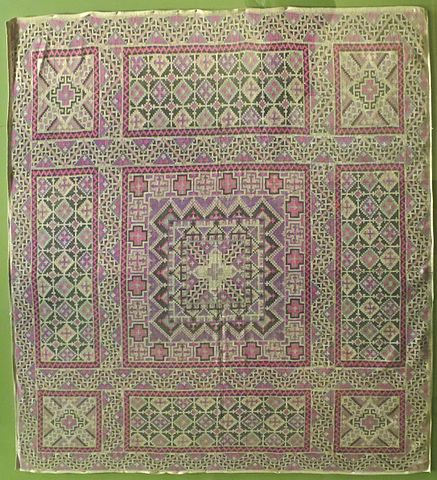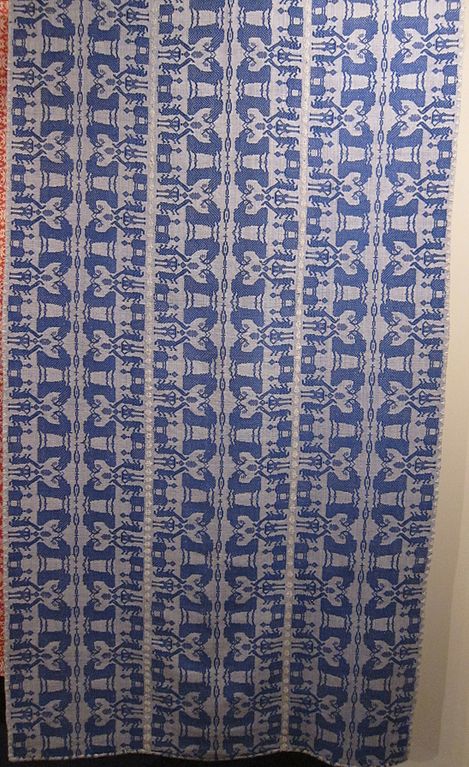The Thammasat University Library has newly acquired a book of importance about an economic product for the Association of Southeast Asian Nations (ASEAN) region. A Glimpse of Philippine Costumes and Textiles is by Her Excellency Ambassador Jocelyn Batoon-Garcia of the Philippine Embassy in Oslo, Norway and Princess Tomas-Tayao, First Secretary and Consul of the Embassy of the Philippines in Berne, Switzerland.
Ambassador Jocelyn Batoon-Garcia previously served as Philippine Ambassador to the Kingdom of Thailand. A Glimpse of Philippine Costumes and Textiles was published in Bangkok by the Embassy of the Republic of the Philippines. It is shelved in the General Stacks of the Puey Ungphakorn Library, Rangsit campus.
It should be of particular interest to students in the TU Department of Textile Science and Technology, as well as to students in the Faculties of Economics, Sociology, History, ASEAN Studies, and related subjects. The TU Library owns a number of books about the textile industry, including some specifically about textiles of the Philippines, such as The Textiles of Southern Philippines: the Textile Traditions of the Bagobo, Mandaya and Bilaan from their Beginnings to the 1900s by Lynda Angelica N. Reyes.
As in the great textile tradition of Thailand, in the Philippines, textile design can be extremely refined. One fabric, piña, is made of fibers from the leaves of the red Bisaya pineapple, producing a surprisingly fine result.
In the Philippines, there are spiritual meanings for some textiles. At Sarangani, a province in the Philippines located at the southernmost tip of Mindanao Island, and the Province of South Cotabato, to the northwast of Sarangani Bay, the Blaan people, one of the indigenous groups of Southern Mindanao in the Philippines, reserve weaving for high ranking women in society. For the Blaan people, weaving is a gift from Furalo, the goddess of weaving.
Also in South Cotabato, the Tboli people, another indigenous group of Southern Mindanao, create t’nalak, a weaving tradition that uses the fibers of Manila hemp. Some women weavers are called dream weavers, because they get ideas for designs of the cloth while they are asleep. As one website comments:
More than simply a honed skill, the craft of weaving for the T’Boli tribe in the Philippines is a spiritual undertaking. From the conceptualization of the design, to the actual weaving process and how the finished product is treated, each part is handled with utmost sanctity. The women who have preserved this spiritual tradition are referred to as “Dream Weavers.” South of the Philippine archipelago lies the province of South Cotabato. And it is here that the ethnic group of the T’boli people reside. In its municipality of Lake Sebu, a type of cloth is hand-woven out of Abaca (a plant native to the Philippines) fibers. Known as T’nalak, this traditional cloth is highly-regarded – just as its weaving-process, and as are the women who make them. The term is taken from how the weaving process begins. The Dream Weavers don’t follow self-invented patterns. Instead, they believe that the designs of the t’nalak they create are brought to them in their dreams by Fu Dalu, the spirit of the Abaca. They then bring these patterns to life by weaving solely from mental images and memory.
Preserving traditions
These and other forms of creativity are preserved and encouraged by the Philippine Textile Research Institute (PTRI), which began as a project of the government and private sectors to develop the national textile industry.
As the PTRI website explains, the institute is mandated to
- Conduct applied research and development for the textile industry sector;
- Undertake the transfer of completed researches to end-users or via linkage units of other government agencies; and
- Undertake technical services and provide training programs.
The Philippine Textile Research Institute (PTRI) is the premier textile research and development arm of the Department of Science and Technology (DOST).
It develops the textile industry by:
- Weaving together the critical roadmaps as well all stakeholders necessary for sustainable development;
- Acting as catalyst to spur growth in the industry through the planned development of growth centers and state-of-the-art service facilities for the textile and garments industries;
- Continuing its research and development initiatives in emerging and advanced technologies to produce competitive products; and
- Linking the resultant world-class Filipino products to the world economies.
The institute’s mission is
to support the Philippine textile, garment and allied micro-small and medium enterprises (MSMEs) achieve global competitiveness with unwavering commitment to work excellence and integrity, through:
- judicious utilization of textile-based resources;
- development and transfer of innovative technologies;
- enhancement of human resource capabilities; and
- promotion of quality assurance and quality control.
Its core values include:
PROFESSIONALISM
The high-caliber research and technologies developed by the Philippine Textile Research Institute is a testament to the level of professionalism that its personnel and leadership possess. The PTRI is a treasure trove of innovative technologies. Through collaborations with designers, business and other industry partners, they offer much for exploration, iteration and further development of PTRI-led technologies
TECHNICAL COMPETENCE
We provide our services based on our competence and knowledge of the garment and textile industry. We encourage the PTRI staff to explore continuing education opportunities to expand their capabilities. We are committed to providing the guidance and mentoring towards the pursuit of excellence…
Among many ongoing projects to promote rapid, inclusive and sustained economic growth is one on hybrid cocoon production in Northern Mindanao for raw silk. The goal is to establish a genomic database for comprehensive gene analysis that would aid in the selection and rearing of superior silkworm breeding lines.
Another association working to support this industry is Habi, The Philippines Textile Council, established in 2009 after the Second ASEAN Traditional Textile Symposium 2008 was hosted by the Philippines.
The Seventh ASEAN Traditional Textiles Symposium 2019 took place from November 4 to 8, 2019 in Yogyakarta, Indonesia. Its aims included to:
- advance knowledge of traditional textile materials, patterns and techniques.
- foster a collective of textile enthusiasts of Southeast Asian textiles.
- develop strategy to increase artisan’s productivity and quality of weaving.
As the website of Habi The Philippines Textile Council notes, its mission is to preserve, promote, and enhance Philippine textiles through education, communication and research using public and private sources.
(All images courtesy of Wikimedia Commons)



